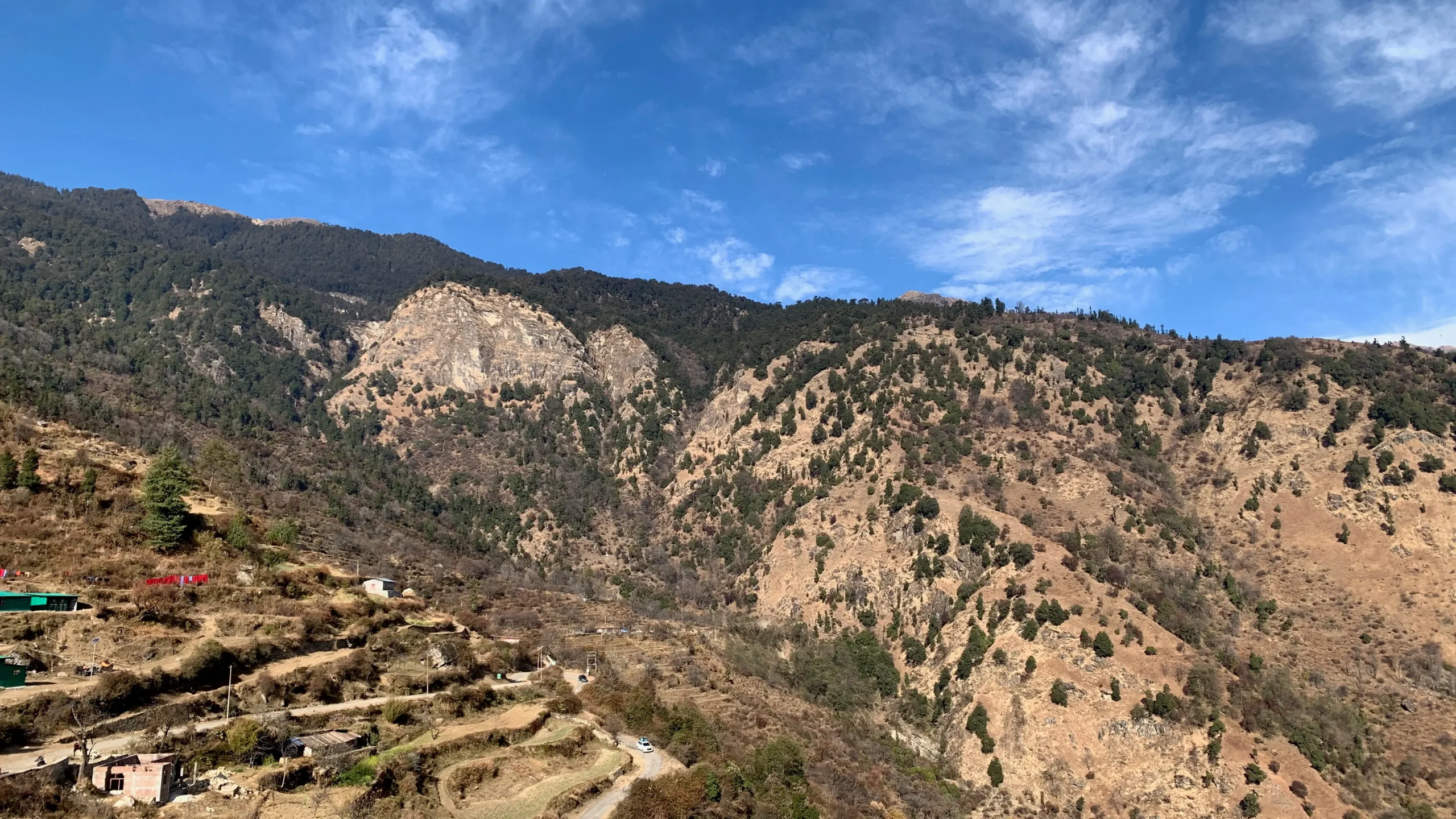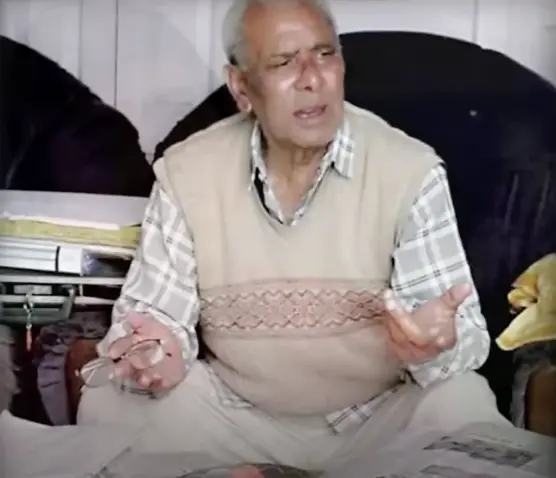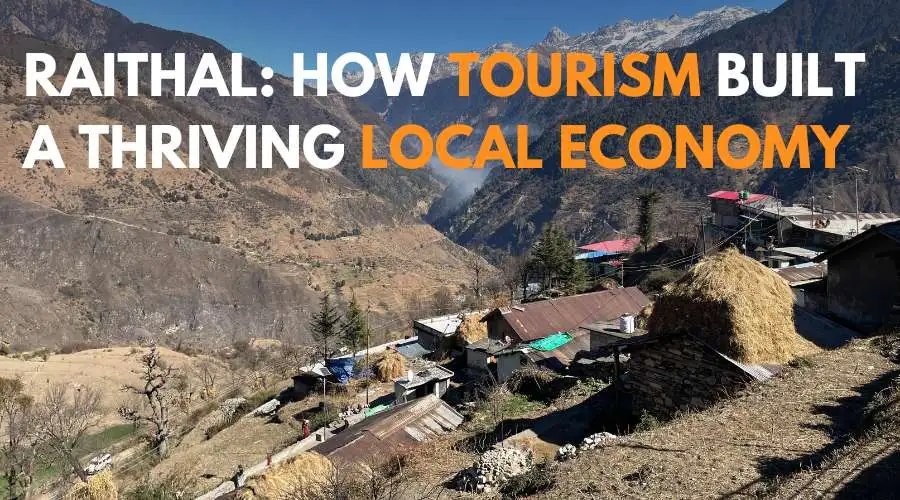In 2020, when COVID-19 was spreading, our family temporarily shifted to our village in Uttarkashi. Along with us, many other families also returned. Suddenly, our village came back to life—fields were being worked on again, once abandoned lands were filled with crops, and local village programs made a return. But once the lockdown was lifted, everyone went back to the cities. I began to wonder—why can’t our village have a local economy where people can sustain their livelihood?
I have seen village life closely, and I know most villages in Uttarakhand suffer from migration, unemployment, and a lack of health and education infrastructure. These challenges make earning a livelihood in Uttarakhand villages difficult. However, my perspective changed when I visited Dayara Bugyal and Raithal Village in 2023.

Upon entering, I immediately noticed how different it was from my village. I could see trekkers here and there, beautiful hotels and homestays, and vehicles owned by local drivers. This indicated to me that Raithal is a prosperous village.
Uttarakhand faces a serious crisis of unemployment and migration. Hundreds of villages have turned into ghost villages due to a lack of livelihood opportunities.1 At the ground level, most villages struggle with inadequate infrastructure—healthcare, education, and road connectivity remain underdeveloped. With no stable means to earn a living, people have no choice but to migrate.
As a result, large populations from the Kumaon region have migrated to Haldwani and Rudrapur, while those from Garhwal have moved to Dehradun, Rishikesh, and Haridwar. Many have settled in cities like Delhi, Mumbai, Chandigarh, and Lucknow in search of a better life.
But my visit to Raithal Village changed my perspective. As I explored, I found myself analyzing everything—the local economy, the influx of tourists, and the model that seemed to be working here. For me, Raithal was a perfect example of a local tourism-driven economy. Raithal is not just attracting Indian travelers; it’s making its mark among foreign tourists as well. At the heart of this transformation lies Dayara Bugyal, which, in my opinion, is a key reason behind the prosperity of the region.
So, let me tell you how Dayara Bugyal became a famous trek.
How a Village Leader Put Dayara Bugyal on the Map
The prosperity of Raithal Village can be easily linked to Dayara Bugyal. It is one of the most famous meadows and winter treks in India. But it wasn’t always popular. A lot of hard work and bureaucracy were involved in putting it on the tourism map.
A local politician, Chandan Singh Rana, first drafted the idea of making Dayara Bugyal a tourist spot. He started his career as a local school teacher and later got into politics. His political success can be measured by the fact that he remained Gram Pradhan of Raithal for 18 years. Additionally, he was appointed as Block Pramukh of Bhatwari Block. A statue is dedicated to him just near Panch Pura Bhawan in Raithal.

During the 1980s, when Uttarakhand was not a separate state, Chandan Singh Rana put forward the idea to develop the Raithal and Dayara Bugyal circuit for tourism purposes. The stone-paved way that you see during your Dayara Bugyal Trek is the result of his efforts. His vision was to make Dayara a popular place for winter games, as this location receives plenty of snow and has slopes suitable for skiing.
Along with that, he was a strong advocate for organic farming. As a result, peas, rajma, and potatoes became cash crops of Raithal. His work included promoting village tourism, the Butter Festival, bringing roads to the villages of Bhatwari Block, advocating organic farming, and planning a helipad near Raithal (Nating Helipad is the result).
Once Uttarakhand became a separate state, work on the Raithal and Dayara Bugyal circuit began. In 2009, when he was president of Dayara Paryatan Utsav Samiti, Rahul Gandhi visited Barsu and Dayara Bugyal.2
This is the perfect example of how a local politician, if persistent, can change the whole game for local villagers and their livelihood. His vision not only made Dayara Bugyal a popular spot but also changed the fate of local villages. Local villagers love him, there are multiple Garhwali songs sung by locals of Raithal dedicated to Chandan Singh Rana. You can listen to those songs here, here, and here.
The Sustainable Economy of Raithal
The migration rate in Raithal is far lower than in other villages of Uttarkashi district. The journey to making Dayara a popular trek began decades ago, and its fame has created a local economy that sustains itself. Multiple tour operators work in Raithal village to bring tourists to Dayara Bugyal. We at Himalayan Dream Treks have a few of our staff members from Raithal as we are a well-known tour operator of Dayara Bugyal.
In recent years, this place has become even more famous due to social media. Local people are earning their livelihood with their homestays and hotels. Many residents are engaged in the tourism sector, working as local trek leaders, guides, porters, support staff, and mule operators, said Yashveer Rana, our slot manager at Raithal.
Then there’s an economy that is separate from the tourism economy. A lot of residents in Raithal work as sheep rearers. Some families have as many as 600 to 800 sheep, which they graze in nearby Bugyals. Crops like peas, potatoes, and rajma have become major crops in nearby villages like Raithal and Gorsali. People are also involved in selling milk products. Overall, Raithal is the village that every other Pahadi would like their village to be.
What’s Ahead?
Tourism has transformed the fate of local residents in Raithal, bringing much-needed employment. However, some challenges remain.
There has been a constant tussle between Raithal and Barsu recently. Barsu claims that Raithal has received the major share of tourism, leaving Barsu behind. It’s true, as most visitors start their treks from Raithal. The local representatives of Barsu have been reaching out to tour operators to consider the route from Barsu as well. We at HDT try to balance both routes. Every year there are multiple customized treks that we organize from Barsu. It will be interesting to see who will claim more tourism in Dayara Bugyal.
Primary education and healthcare are available in the village and near Bhatwari, but in my opinion, they are still not sufficient. In case of serious emergency, locals rush to Rishikesh and Dehradun.
Dayara, on the other hand, is struggling with soil erosion and climate change. Signs of heavy soil erosion are evident.
Even though the village is beautiful, like any other village in our area, Raithal still struggles with waste management. Litter can be seen in the village.
Conclusion
The story of Raithal can be replicated in other parts of Uttarakhand. This village is a perfect example of how a local economy can be created to sustain the livelihood of the local people. Sustained efforts from both local authorities and villagers are crucial for long-term success. Moreover, villagers need to work on the coming problems, whether it be meadow erosion, improving village tourism, or addressing climate change.

Leave a Comment